Category: HEARTe
Jean’s referral
This is the referral letter from hospital Cardiac Rehabilitation (CR) team to community CR nurse:
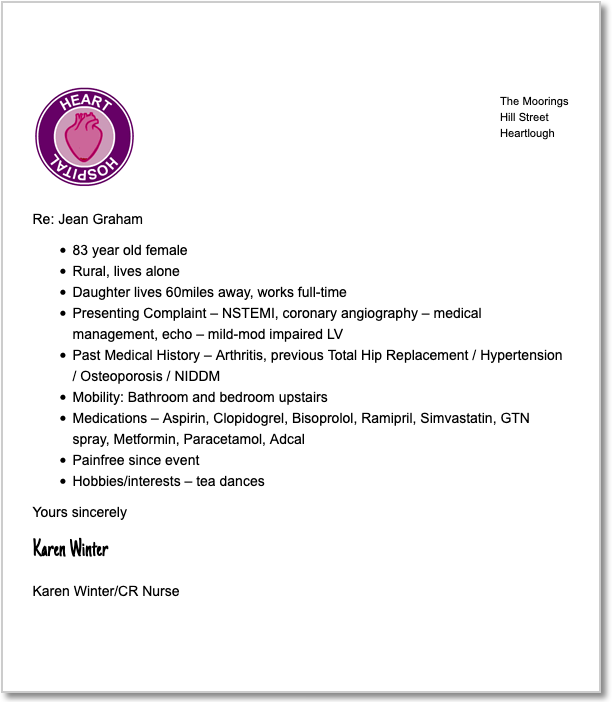
Jean
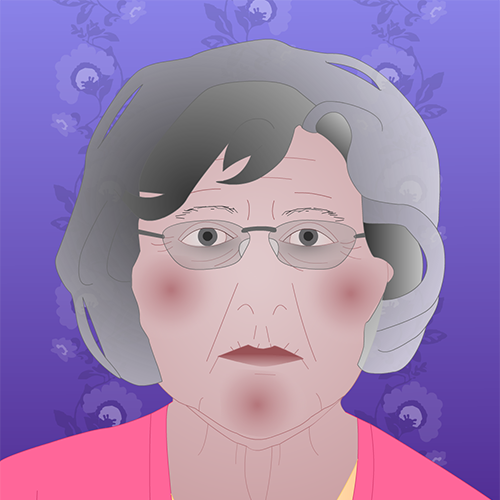
Jean is discharged from hospital…
Key messages
- Use behavioural change techniques to enable the patient to set their own realistic and achievable goals to support self management
- Achieve a healthy weight loss through combining a balanced diet with regular structured activity
- Cardiac Misconceptions
- Role of cardiac rehab
- Secondary prevention ongoing management
- Menu based cardiac rehab
Cardiac misconception quiz
Maze
Ongoing follow up and referral
John completes the initial part of his CR programme, consider the computer readings now in terms of his lifestyle issues and clinical assessment.
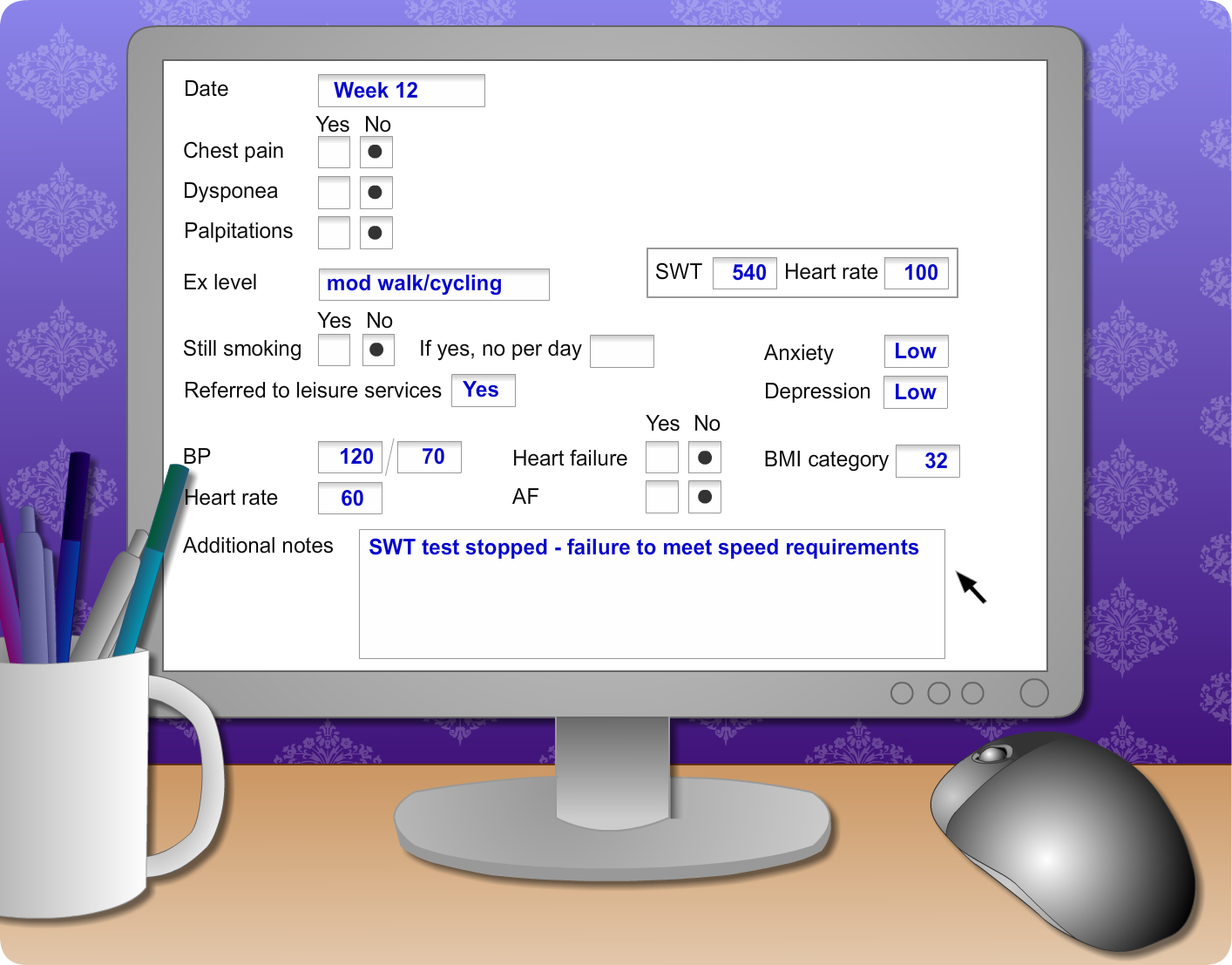
He will now be referred to community leisure services who will continue to be a support network for him while facilitating lifestyle changes and self management. Further lifestyle goal setting and discussion should be ongoing in the practice and at his follow up appointments.
Cardiology clinic follow up
After 7 weeks John is reviewed in the cardiology clinic to reassess his cardiac symptoms, recovery and medications. The cardiologist asks John how he is and discusses his recovery process including his decreasing weight, stopping smoking and his activity. The cardiologist explains these are all reducing risks now and encourages him to continue with the support of the CR team.
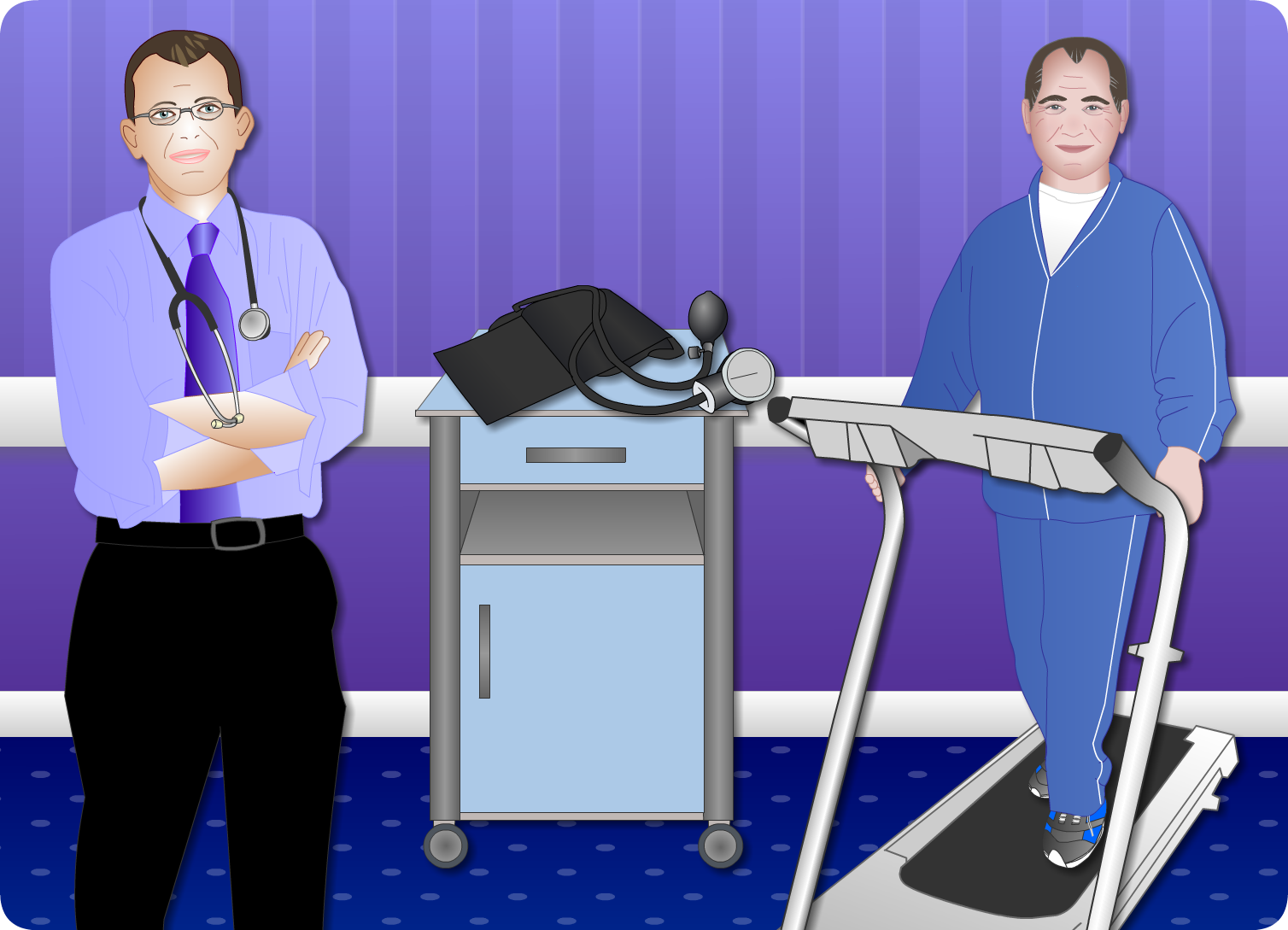
As part of this review his cardiologist explains he requires a few tests which include an exercise test (ETT) and an echocardiogram (Echo). These examinations are performed and John is told he is making good progress. He is reminded that his medications may continue to require adjustment and the cardiologist tells John he will send his GP and the CR Team a letter informing him of Johns good progress. As John is an HGV driver there are special restrictions he requires to adhere to legally.
Dietetic consultation
Following the group session, John has a one to one consultation with the dietitian to discuss and agree individual goals using health behaviour change techniques via the diet agenda setting tool. Acknowledging that John had highlighted this as a goal, John was encouraged to consider this more specific agenda. He shows the dietitian his completed 3 day food diary prior to this consultation.
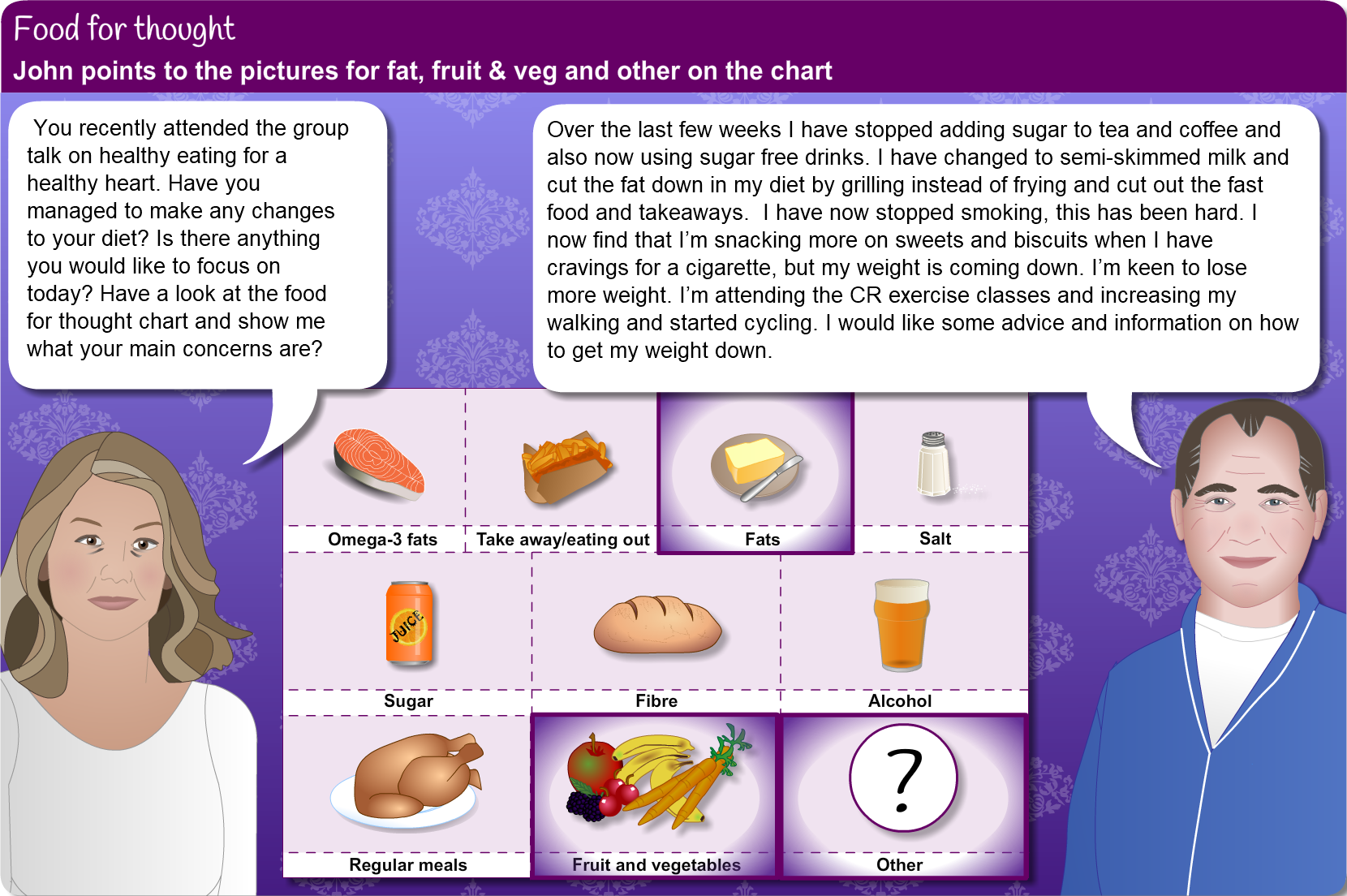
John is setting his agenda using the food agenda setting tool. When assessing readiness for change and action the patient is engaging in dietary and lifestyle change.
John seems committed to further dietary change and for this the dietitian is giving him the tools to help him achieve his goals concerns.
Further resources for behavioural change to support your cardiac patient:
NHS Education for Scotland, Positive Behavioural Support: a learning resource
Dietetic education session
John attends the CR class and this week’s education session is presented by the cardiac rehabilitation dietitian. The education component of the CR class can consist of many different aspects as described. Visual aids and activities involving patient participation are found to be particularly helpful in engaging the group. There will be group discussions related to key dietary concepts for secondary prevention. Some or all of these can be discussed depending on the class session.
She discusses that people should be aiming for 5 portions of fruit and vegetables daily and be encouraged to eat white and omega-3 rich oily fish at least weekly. They should reduce total and saturated fats, replacing these with Monounsaturated fat/Polyunsaturated fat. People should try and increase fibre intake (both soluble and wholegrain) and reduce salt intake.


